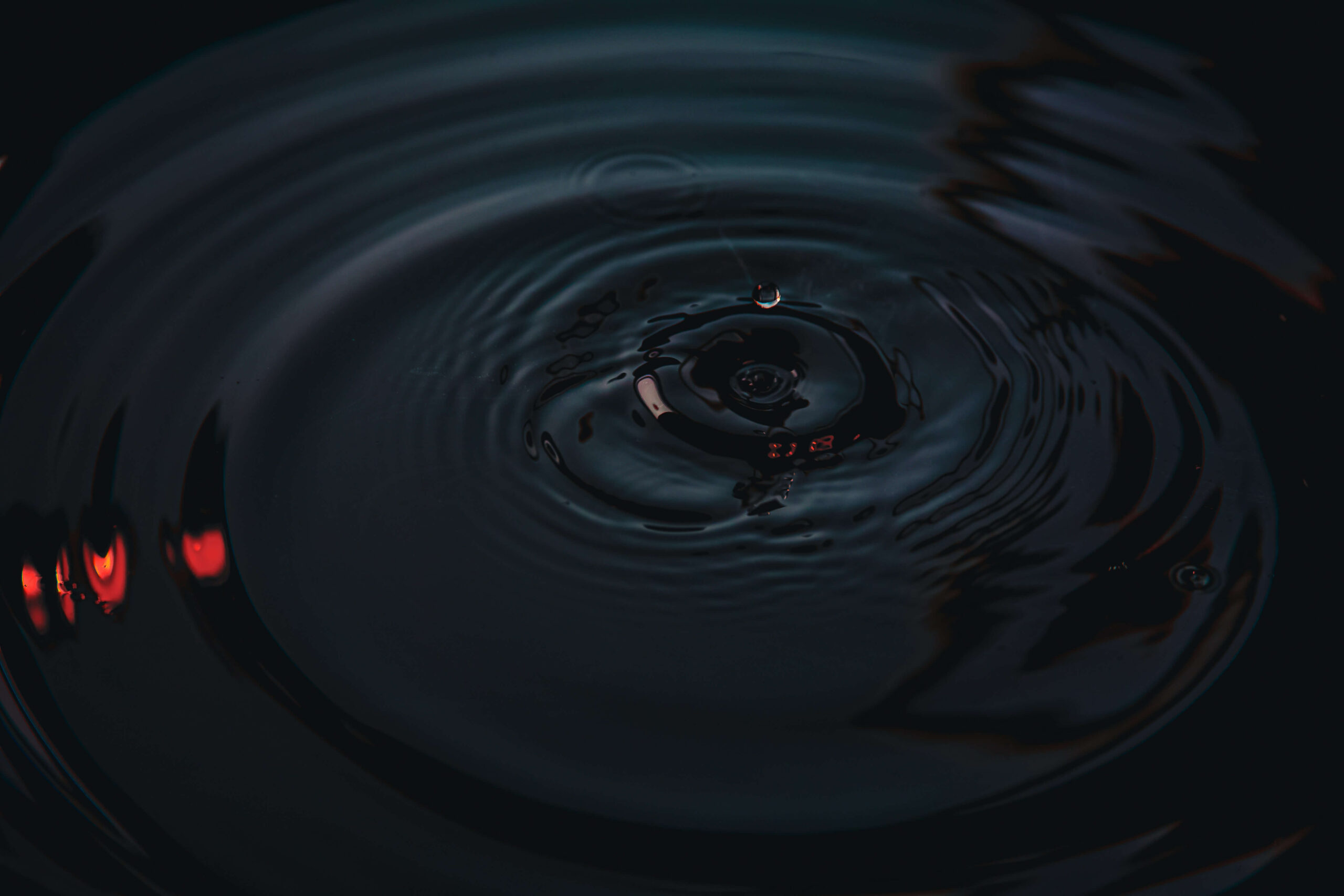In the field of fluid management systems, ensuring that parts are sealed under pressure represents a real challenge for additive manufacturing. Thanks to HP Multi Jet Fusion (MJF) technology and PA12 material, it is now possible to produce parts that can withstand pressures of up to 10 bar (1 MPa) without additional sealing treatment.
An alternative to traditional processes
Additive manufacturing with MJF technology offers results comparable to injection molding in terms of dimensional accuracy and surface quality, while eliminating the need for costly molds. This makes it a credible alternative for the production of functional prototypes, final parts and limited series, particularly for pressurized components.
The porosity problem finally solved
One of the main limitations of traditional additive technologies (FDM, SLS...) is the porosity induced by the printing process. This porosity often generates leakage, requiring costly treatments such as infiltration, coatings or thermal post-treatment.
With MJF, the internal structure is much denser, significantly reducing the micro-gaps responsible for leakage. One study demonstrated that a ball valve printed in PA12 could pass ISO 9393 pressure tests without infiltration.
Case study: a printed valve, tested and validated
As part of a research project at GEPI University in Spain, involving the sealing of components made from PA12 using Multi Jet Fusion (MJF) technology, an industrial-type ball valve was printed. Only the outer parts subject to pressure were printed. Here are the outstanding results:
1. Aim of the study
Validate the ability of MJF technology to produce functional watertight parts capable of withstanding up to 10 MPa, without the need for post-printing sealing treatments (coating or infiltration), while complying with ISO 9393 and EN ISO 16135 standards for industrial applications.
2. Materials and Processes
The tests were carried out with PA12 powder on an HP Jet Fusion 4200 printer, with the following characteristics:
- Particle size: 60 µm
- Part density: 1.01 g/cm3
- Melting temperature: 187 °C
- Dimensional resolution: ±0.2
Specimens were oriented along the XY, YZ and ZX axes to assess mechanical anisotropy and influence on sealing.
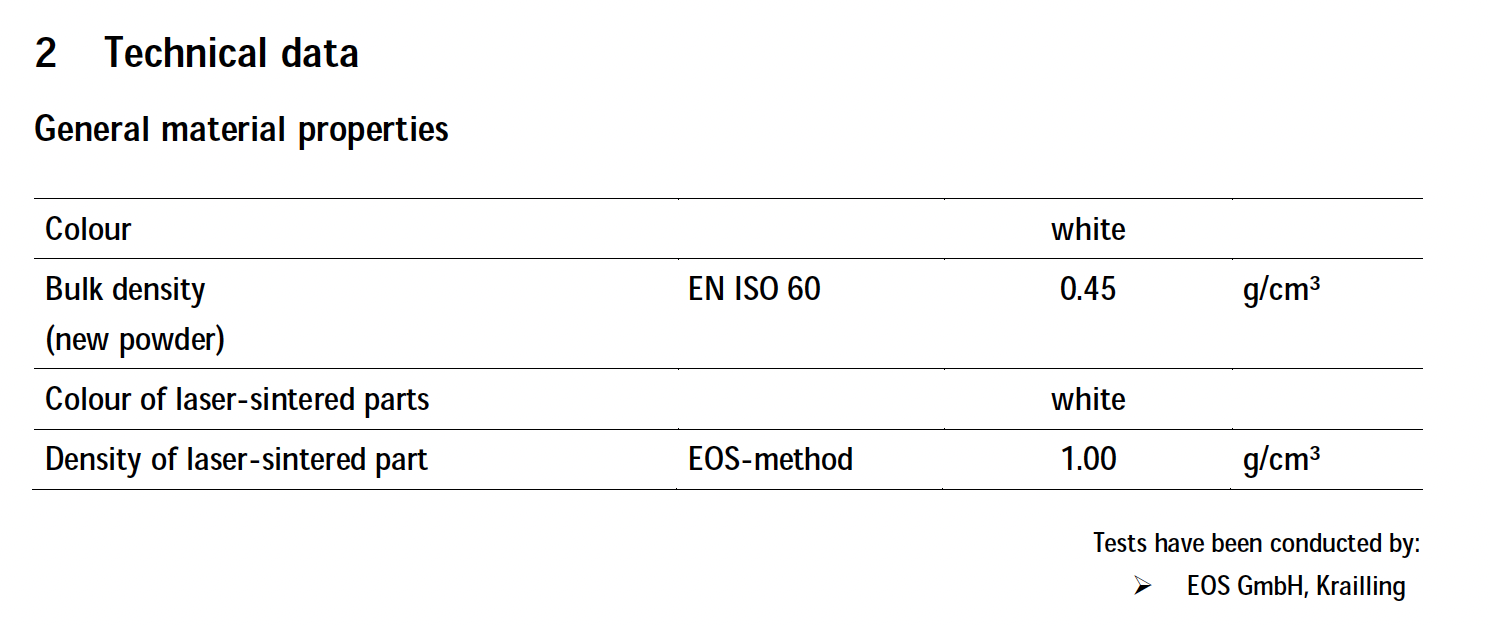
3. Mechanical tests: Traction
Tensile tests measured Young's modulus, yield stress and fracture. Average values ranged from :
- Young's modulus: 3.5 to 4.4 GPa
- Max. stress 48 to 57 MPa
- Allongement à la rupture : < 5 %
Printing direction has no significant influence on tensile strength, but ZX orientation offers a slight mechanical superiority.
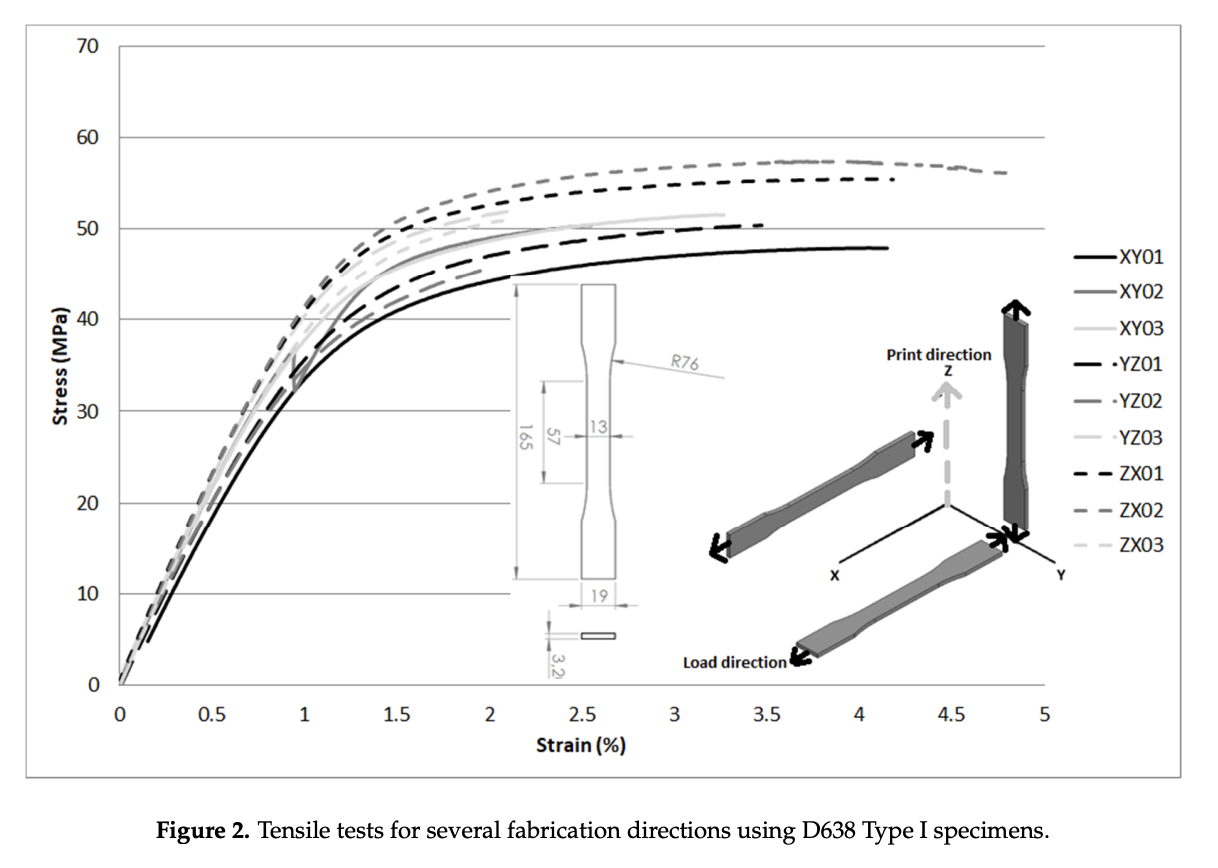
4. Leak tests : Influence of thickness and orientation
Eight cylindrical samples with thicknesses ranging from 0.4 to 0.7 mm were pressure tested (up to 0.4 MPa) in two orientations (H = horizontal, V = vertical).
| Thickness (mm) | Orientation | Leakage pressure 3 L/h (MPa) |
|---|---|---|
| 0,4 | V | 0,003 |
| 0,4 | H | 0,052 |
| 0,5 | V | 0,044 |
| 0,5 | H | > 0,400 |
| 0,6 | V | 0,357 |
| 0,6 | H | > 0,400 |
| 0,7 | V | > 0,400 |
| 0,7 | H | > 0,400 |
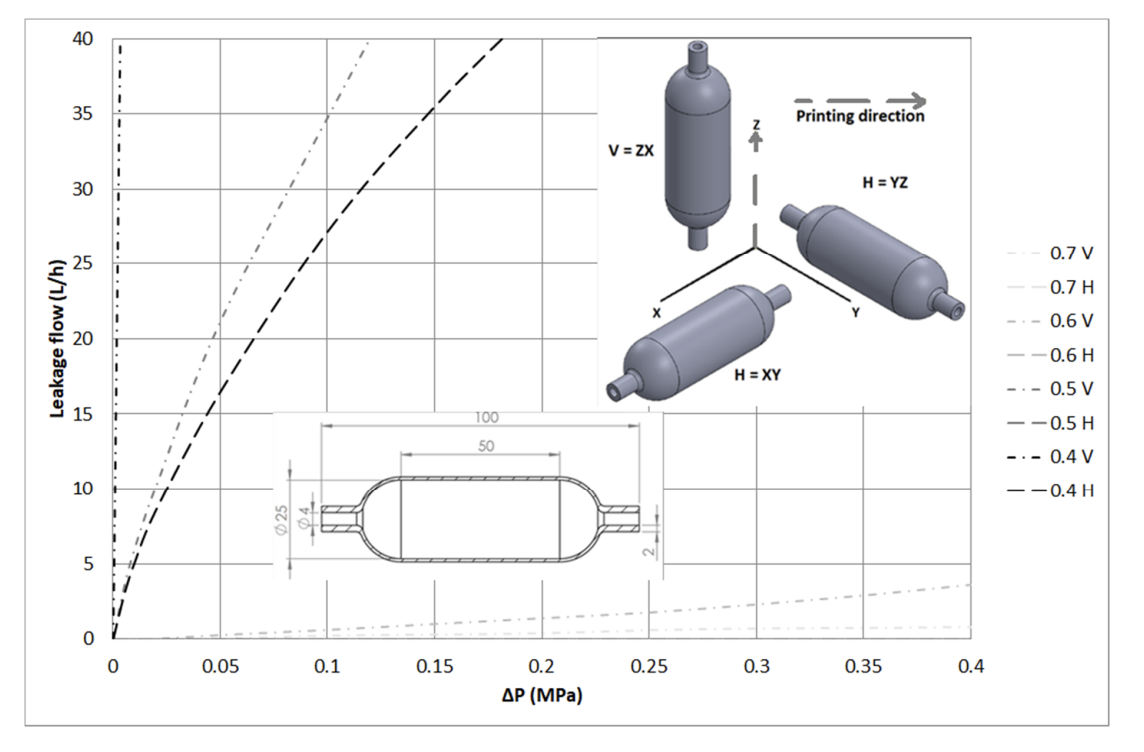
Conclusion: horizontal orientation is preferable. Leakage decreases significantly with thickness.
5. Microstructure and porosity
SEM fractographic analysis shows that the vertical orientation is more porous. This is linked to the higher number of layers and the sometimes imperfect fusion between them.
6. Validation test: ball valve PN10
An industrial valve was printed and tested to ISO 9393-2:
- Hull test: 4.2 MPa for 1h at 20°C → no leaks
- Seat and gasket test: 1.1 to 1.5 MPa → compliant
All without post-printing treatment.
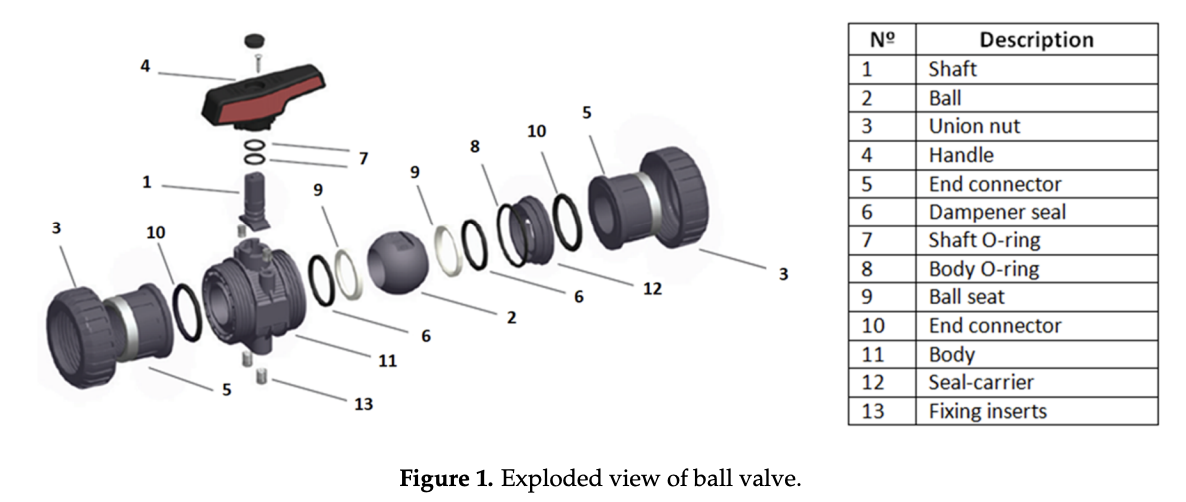
Influence of print orientation and thickness
The study highlighted two key factors in guaranteeing watertightness:
-
Print orientation: printing in horizontal orientation (XY) offers a better seal than vertical orientation (Z), which generates more layers and therefore potentially more micro-spaces.
-
Wall thickness: a minimum thickness of 0.6 mm is recommended to prevent leakage. At 0.4 mm, leaks appear as early as 0.003 MPa in vertical orientation.
Mechanical performance of MFJ PA12
Tensile tests on specimens printed in all three directions (XY, YZ, ZX) show good consistency in mechanical properties:
-
Tensile strength: up to 57 MPa.
-
Modulus of elasticity: between 3.5 and 4.4 GPa.
-
Fragile behavior, but sufficient for technical applications subject to pressure.
A real opportunity for manufacturers
The results of this study open up new perspectives for industry professionals:
-
Reduce development costs and production times.
-
On-demand production of sealed parts, without tooling.
-
Customize or modify parts quickly.
Conclusion
At 3DPROD, we harness the potential of HP Multi Jet Fusion technology to produce PA12 parts that are precise, tough and leak-proof. Whether for functional prototypes or final production runs, this solution is ideal for pressure-sensitive applications, without the constraints of traditional manufacturing methods.
👉 Want to test print technical parts with sealing requirements? Contact our team today!
3D Prod tip : Test your projects by making your quotes online via our dedicated platform: Get your quote online!
